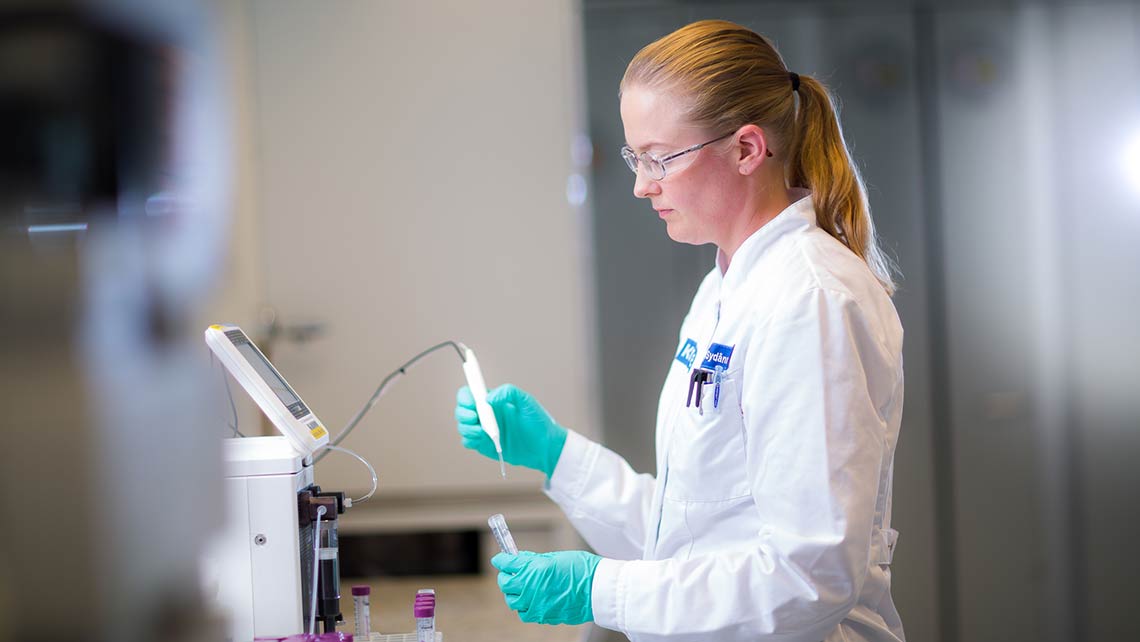At Kemira, we also look to external partners to achieve R&D breakthroughs. Collaborations inject a fresh perspective, provide added brainpower, and offer additional resources.
Our current network has more than 50 universities, research institutes and companies including special collaborations with our customers. They complement our know-how and resources. In return, they find an ambitious partner with strategic focus and a commitment to sustainability.
“People want to work with Kemira because of our chemistry expertise and global reach. They understand chemistry can enable a more sustainable future,” explains Veli-Matti Vuorenpalo, Manager, Global Processes and Projects for R&D.
With each partnership, Kemira tackles areas like carbon neutrality, greenhouse gas emissions, clean water, plastic waste, and better bio-based solutions for the circular economy.
Veli-Matti says he looks for collaborators who can support the company’s pursuit of new solutions to help achieve the United Nations Sustainable Development Goals.
“Our vision is to be the leading provider of sustainable, biobased chemistries for water intensive industries and reducing the world’s dependence on single use plastic”
Tapping into academic expertise
Veli-Matti believes each partnership brings new possibilities. Collaborating with universities that work on fundamental research helps Kemira boost product development, especially in unfamiliar research areas. At the same time, it gives academic partners access to real cases.
For example, Kemira is working closely with Aalto University in Finland to tap into their expertise in computational chemistry. Our goal is to make high-performing alternatives to plastic, especially for food packaging. Through this partnership Kemira is gaining a new atomic-level understanding of materials science for fiber-based packaging.
“Our researchers can dramatically speed up the innovation process because they know what’s likely to succeed. It’s less trial and error in the lab,” Veli-Matti says excitedly.
Teaming up for sustainability
Another great example of R&D teamwork is our VEHICLE project. Working with several partners including biotechnology company Ecohelix, we hope to turn low-value biomass side-streams from pulp processing into high-value, bio-based chemistries for paper and board applications.
Finding external funds for sustainable breakthroughs
Another advantage of partnering up is access to external funding. Veli-Matti says that small to medium enterprises (SMEs) that partner with Kemira benefit from our expertise in applying for funding.
Financial support is often available at the national or EU level. Horizon Europe, the next EU research and innovation program for 2021-2027, has allocated close to €100 billion to strengthen the region’s scientific and technological base, develop solutions for healthier living, drive digital transformation and fight climate change.
Veli-Matti says there is one other very important reason to collaborate: risk reduction. Collaboration offers a way to share financial risks when it comes to demonstrating new technology or finding future opportunities along the value chain.
Looking to the future
One of Kemira’s strengths as a company is anticipating and understanding our customers’ future needs. “It’s a huge reason people want to partner with us. Based on our strong customer intimacy we know about their major future challenges and how our chemistry needs to adapt to this change. Together with our research partners we are working together in several development projects aiming for future products” says Veli-Matti.
For example, Kemira noticed increasing interest from customers in plastics alternatives like bio-based solutions. Naturally we jumped at the chance to be part of a pilot project that is exploring natural fiber substitutes. Led by Finnish technology research center VTT, Kemira is one of 50 collaborating companies.
Kemira kickstarted another project with VTT in December 2020, this time with Helsinki University and other partners. The new project, called ValCel, is financially backed by Business Finland and will explore the potential for renewable, wood-based materials in various surface applications – another area where bio-based solutions are replacing incumbent fossil-based technologies.
Are you working on an exciting research project for sustainable chemistry, at a university, research institute or start-up company, and looking for a strong partner at your side? Please don’t hesitate to contact Veli-Matti.Vuorenpalo@kemira.com !

